Stephen Brookbank

Toronto
http://www.stephenbrookbankphotographer.com
Kunstart: Fotografie
Technik: Großformat
Stil: Realismus
Vita / Lebenslauf:
essay by Christopher Youngs
September 2008
When first looking at Stephen Brookbank�s series, Live / Work, the photographs frequently appear to be concerned with the ongoing tension between residential and industrial land use, a fairly traditional theme in the cultural landscape. This would be a misconception. Instead, by framing where people live in close proximity to where people work, Brookbank reveals more subtle aspects of the relationship. That these images are not harmonious in a visual sense is clear, but, in their very discord, they tell a story of co-joined un-identical twins: co-existing despite themselves because of their interdependence.
Today it seems all too easy to view industry as a sinister manifestation of Capitalism: denuding nature and invading the serenity of residential communities. On the other hand, the conversion of factories and warehouses South of Queen Street West in Toronto, into artists� studios, art galleries, expensive restaurants and extravagant condominiums suggests that the struggle for space is a double-edged sword. The gentrification of neighborhoods creates higher income housing and forces some earlier residents to have to move away to more affordable dwellings.
In many cases large remnants of an industry have been demolished to accommodate city planners� dreams. Le Corbusier was said to have commented that the grain elevators along Montreal�s St. Lawrence shoreline were the best architecture he had seen in Canada. They have since disappeared to be replaced by parks, housing and museums.
In these photographs there isn�t a simplistic black or white, good or bad� no misguided missionary zeal. We always seem eager to leap to the rescue of perceived endangerments to our environment: even extending our moralistic point of view to the extent that some animals (often snakes, sharks and lawyers) are inherently evil and that others, such as otters, kittens, and meerkats are not just good but cute.
In Brookbank�s eye, these images of the codependency between industry and housing are magnified, quietly dramatized, by the close juxtaposition of the home and the factory. These factories, oil depots and warehouses are still functioning, and the adjacent houses are still occupied- forming an unexpected symbiotic relationship.
The panoramic view of Hamilton, Ontario acts as an introduction, an overview to an anthology of smaller vignettes. Hamilton is an industrial city, owing its very existence to the steel industry. Without the factories, smelters belching smoke, there would be no houses. In the past, many industrial developments included housing for the labors: accommodations ranging from row houses to dormitories. So, the proliferation of housing was a natural extension of industry. The more removed, elegant homes of the owners and upper management were also a byproduct of the factories. So, the residential areas grew up around the factories. Plants did not invade the space of the housing. Virtually all of these photographs are reminders of that earlier time. A time when workers may have been underpaid and unappreciated, but at least the walk to work was an easy commute.
Aside from their visual strength, Brookbank�s images are beautifully printed. Prolonged discussions of technique in photography are usually about as effective as trying to put a square peg in a round hole. In this case, however, the method is important to the means of perception. As is suggested by some blurring of light traces and pluming of smokestack emissions, most of these shots are time exposures, usually from between four to five minutes. This means that the photographer can�t actually see what he is capturing as an image. It is somewhat similar to a pinhole camera, where the result can only be seen once it�s developed. So, Brookbank has to imagine, conceive, and predict his end result. He is trying to catch an elusive world, a world distorted by time beyond normal perceptions.
There is an ethereal quality to many of these images- an otherworld appearance. The strange light effect doesn�t reflect a surreal world. Rather, it is akin to a Luminist landscape, such as the mysterious illumination reflected by the moon in the works of Casper David Friedrich. This eerie sense of reality is heightened by capturing details such as the blue in the snow in Faulkner Street, Dartmouth, Nova Scotia or the shadow of an adjacent building in Douglas Avenue, Saint John, New Brunswick.
Interestingly, these images are not threatening. Without being at all sentimental, they exude quietude, a sort of old hometown nostalgia. The modest roadhouse diner in Restaurant, Notre Dame, Montreal, Quebec exists in a weird kind of limbo-land, surrounded by oil storage tanks suggesting protection-not invasion. The effect is reminiscent of the opening theme of Trailerpark Boys with the music and the 50�s sepia film of boys on bicycles.
In Dominico at Copper Cliff, Sudbury, Ontario beyond sheer curtains, there is an elderly woman sitting napping. She obviously feels comfortable in her community. This woman�s position resembles a Vermeer interior. Instead of the light from a window suggesting the turmoil of the exterior world, everything is reversed, turned inside out. She can relax, because the towering �Big Smoke� beyond her house was constructed at an enormous height to ensure that pollutants were no longer disturbing her world. Instead, the contaminates are said to flow through the atmosphere as far as Scandinavia.
Rather than being a photographer who is documenting a situation at the expense of people and exploiting their way of life, Brookbank feels a true affection for these people, their lives and their workplaces. It�s the way many of us may be attracted to a mutt as opposed to a graceful purebred. He is clearly more interested in mongrels that poodles. As he says: �I am attempting to deal with the humanity of a neighborhood in the omnipotent presence of such things as a transmission grid or industry or the power plant�to emphasize the resilience of our working towns and cities.�
In the midst of the phenomenon of out-sourcing, Stephen Brookbank is concerned with the fragility of the human condition, the cloistered fear, or void, within North American working and middle class society that can erode our integrity and distort our sense of responsibility. In the end, he exposes the difference between what our eye is accustomed to seeing and what really is there: forcing a new aesthetic, a strange and unusual beauty, something closer to the truth.
Aktivitäten / Ausstellungen:
SELECTED EXHIBITIONS
2008
-Monmouth Museum �Juried Photography Invitational Exhibition�. Curators: Stephen Perloff and Sarah Morthland. Lincroft, New Jersey. September 26 to November 2.
-Toronto Image Works Gallery �Live / Work�. Solo show. Curator: Bernice Lyons-Page. Toronto, Ontario. September 12 to October 11
-Newspace Center for Photography �The Altered Landscape�. Curator: Chris Bennett. Portland, Oregon. February 8 to February 27
-Scratch Gallery "365 Days- 1 Year Anniversary". Group exhibition. Curator: Eden Bender. Toronto, Ontario
January 22 to February 23
2007
-Photographic Center Northwest �12th Annual Photographic Exhibition, Up & Now!� Curator: Charlotte Cotton, curator of photography at the Los Angeles County Museum of Art. Seattle, Washington. July 13 to August 30, 2007
-Rawls Museum Arts (affiliate of Virginia Museum of Arts) �In Between�. Solo show. Curator: Leigh Anne Chambers. Courtland, Virginia. June 8 to July 7, 2007
-Scratch Gallery �Imprint�. Group exhibition. Curator: Eden Bender. Toronto, Ontario. June 7 to June 30
-The Center for Fine Art Photography �Interactions Exhibit�. Curator: Alison Nordstrom, curator of photography, George Eastman House. Denver, Colorado. May 4 to May 30
-Scratch Gallery �Inaugural Exhibition�. Curator: Eden Bender. Toronto, Ontario. January 5 to February 24 2006
-The Gallery at 3rd Ward �Humble Media: �New in Town�, Pinned-Up and Story�. Group exhibition. Curators: Jon Feinstein, Rebecca Smeyne. Brooklyn, New York. December 11 to December 16
-The Hewitt Gallery of Art With Olivia Bernard and Evi Abeler. Curator: Millie Burns. New York City, New York. November 13 to December 6
-The Center for Fine Art Photography �2006 International Exhibit of Fine Art Photography�. Curator: The Hon. Roger Reynolds, president of The Royal Photographic Society. Denver, Colorado. November 17 to December 22
-Grimsby Public Art Gallery �Annual juried exhibition�. Grimsby, Ontario. September 1 to October 9
-Suffolk Museum �Celestial Images in Art�. Juried exhibition. Suffolk, Virginia. September-October
-Rawls Museum Arts (affiliate of Virginia Museum of Arts) �Annual National Art Exhibition�. Juror: F. Lennox Campbello. Courtland, Virginia. June-July
-Contact Photography Festival �Urban Optics-Group Photography Exhibition at The Gladstone�. Toronto, Ontario. May
2005
-Distillery District Art Exposition Toronto, Ontario. July
-Smithfield Cultural Arts Center �Blue�. Solo show. Smithfield, Virginia. January
2004
Rawls Museum Arts (affiliate of Virginia Museum of Arts) �Blue�. Solo show. Courtland, Virginia. Curator: Leigh Anne Chambers. July 30 to September 5
SELECTED AWARDS and PUBLICATIONS
2008
-Juror�s Recognition Award. MONMOUTH MUSEUM. September.
2007
-Artists� Showcase, CAMERA ARTS MAGAZINE, July / August issue.
-Feature interview and article, THE TIDEWATER NEWS, Virginia, June 3.
-SNAP!07 a photographic fundraiser for ACT. Work selected for live auction.
2006
-Best in Show, Annual National Art Exhibition, Rawls Museum Arts.
-Jim Shea Memorial Award (best overall submission) for 2006 SNAP! Photo Competition (a photographic fundraiser for the AIDS Committee of Toronto).
2005
-Winner best landscape of the 2005 SNAP! Photo Competition.
-Work selected for Habitat for Humanity annual fundraiser.
EDUCATION
-Nova Scotia College of Art and Design 1992-1995. Bachelor of Fine Arts program. Major in photography. Minor in film studies.
-Dawson Institute of Photography 1991-1992. Commercial photography course.
|
|
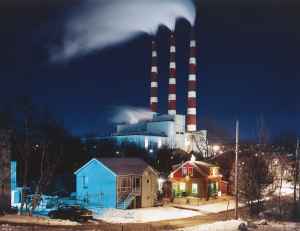
|
Pinewood Drive, Dartmouth, Nova Scotia
Fotografie
Großformat
71 x 91 cm
verkäuflich (Preis auf Anfrage)
mehr Informationen
|
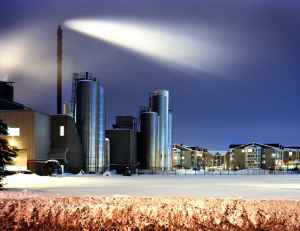
|
Saputo Cheese, Saint Hyacinthe, Quebec
Fotografie
Großformat
71 x 91 cm
verkäuflich (Preis auf Anfrage)
mehr Informationen
|

|
Blvd Montreal East, Montreal, Quebec
Fotografie
Großformat
71 x 91 cm
verkäuflich (Preis auf Anfrage)
mehr Informationen
|
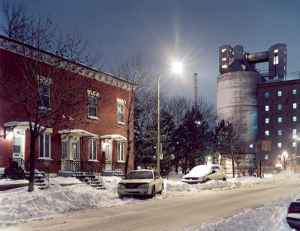
|
Lantic Sugar, Rue de Montigny, Montreal, Quebec
Fotografie
Großformat
71 x 91 cm
2008
verkäuflich (Preis auf Anfrage)
mehr Informationen
|

|
Hamilton, Ontario
Fotografie
Großformat
50 x 101 cm
2008
verkäuflich (Preis auf Anfrage)
mehr Informationen
|
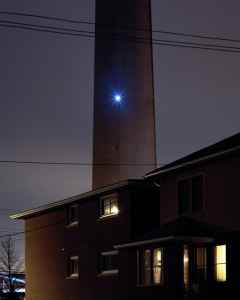
|
Genoa at Copper Cliff, Sudbury, Ontario
Fotografie
Großformat
91 x 71 cm
verkäuflich (Preis auf Anfrage)
mehr Informationen
|
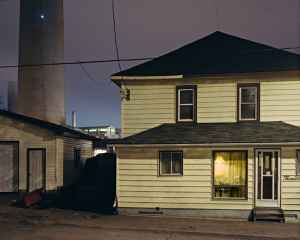
|
Dominico at Copper Cliff, Sudbury, Ontario
Fotografie
Großformat
71 x 91 cm
2008
verkäuflich (Preis auf Anfrage)
mehr Informationen
|
|
 english
english
 español
español francais
francais
 russkii
russkii english
english
 español
español francais
francais
 russkii
russkii






